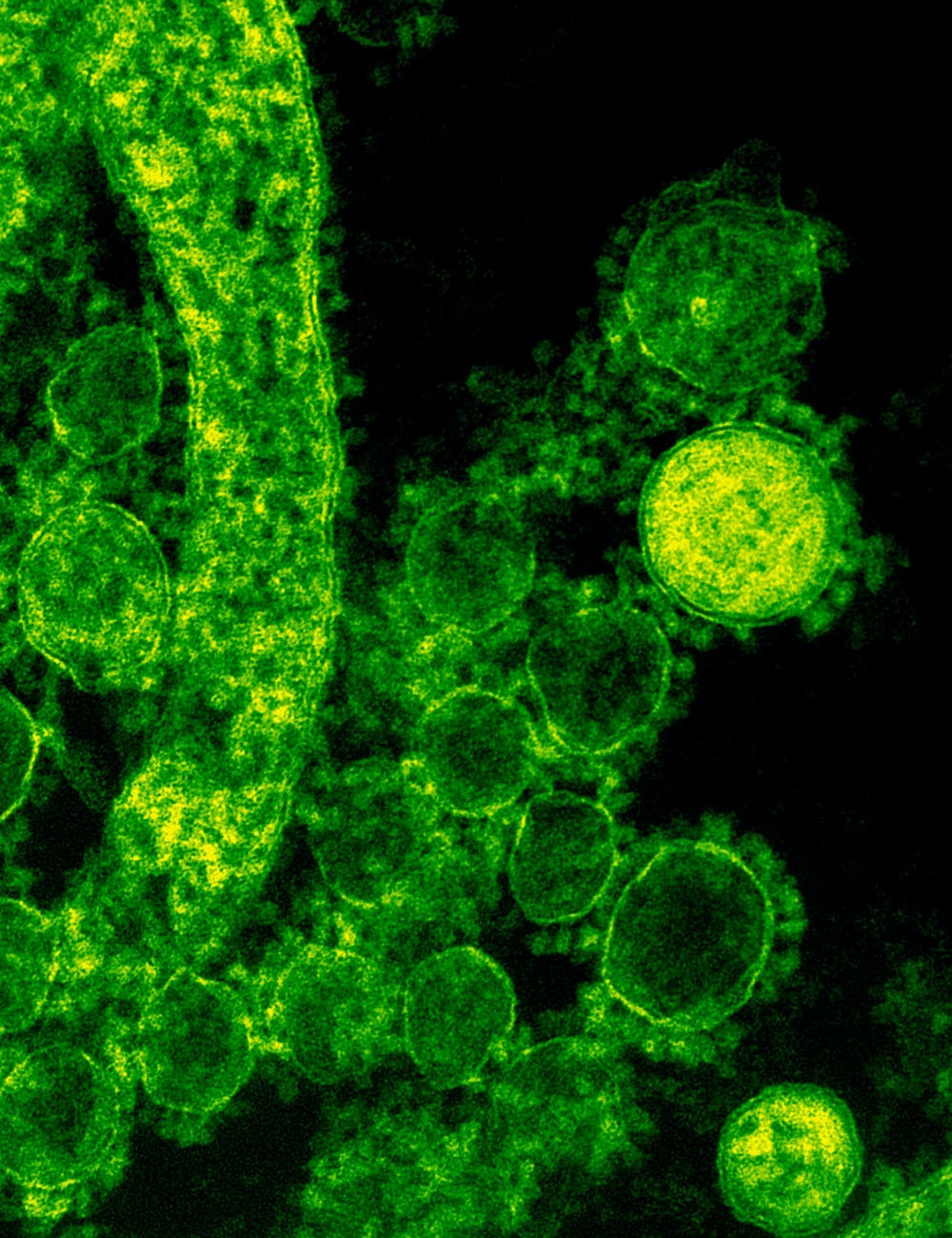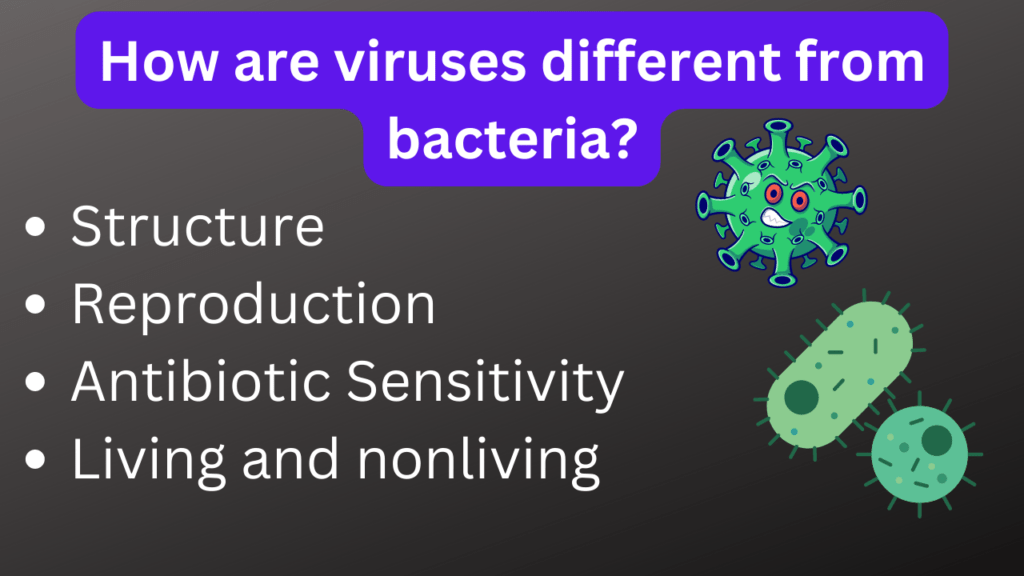Here you will learn about “How are viruses different from bacteria”.
Viruses and bacteria are both microscopic entities that play significant roles in the world of biology and medicine. While they share certain similarities.
They are fundamentally different in their structures, life cycles, and impact on living organisms. Understanding these differences is crucial to effectively combat and prevent diseases caused by these microorganisms.
Following are the differences between viruses and bacteria.
- Structure
- Living and nonliving
- Reproduction
- Antibiotic Sensitivity
- Host Range
Structure
The most fundamental difference between viruses and bacteria lies in their structure.
Bacteria are unicellular, prokaryotic organisms with a well-defined cellular structure, including a cell wall, cell membrane, and genetic material in the form of DNA.
On the other hand, viruses are much simpler in structure, consisting of genetic material (either DNA or RNA) encapsulated within a protein coat called a capsid.
Note: Some viruses may also have an additional lipid envelope acquired from their host cell during the replication process.
Living or Non-living
Bacteria are undeniably living organisms . They are autonomous organisms capable of carrying out metabolic activities independently.
Viruses straddle the line between living and non-living entities. Outside of a host cell, viruses remain inert and cannot carry out metabolic processes on their own.
Virus require a living host cell to replicate and reproduce, which is why they are often considered obligate intracellular parasites.
Reproduction
Bacteria reproduce through binary fission, a process in which a single bacterium divides into two identical daughter cells. This mode of reproduction allows bacteria to multiply rapidly under favorable conditions.

Vruses cannot replicate on their own and must infect a host cell to reproduce. Once inside the host cell, the virus hijacks the cellular machinery, forcing the host to produce new viral particles.
This process eventually leads to the lysis of the host cell, releasing the newly formed viruses to infect other cells.
Antibiotic Resistance
Antibiotics are effective in treating bacterial infections by targeting specific structures or processes unique to bacteria.
However, the misuse and overuse of antibiotics have led to the emergence of resistant bacterial strains, reducing the effectiveness of these medications.
On the other hand viruses do not respond to antibiotics, as they lack the cellular machinery targeted by these drugs.
Antiviral medications are designed to specifically combat viral infections by inhibiting viral replication or entry into host cells.
Host Range
Bacteria generally have a broader host range, meaning they can infect various organisms, including humans, animals, plants, and other microorganisms.
While ruses typically exhibit a more specific host range. Each virus has evolved to infect particular species or even specific cell types within those species.
Note: some viruses only infect humans, while others may be exclusive to animals or plants.
Conclusion
In conclusion, viruses and bacteria are distinct entities with unique characteristics. Bacteria are living, a defined cellular structure, capable of independent reproduction.
On the other hand, viruses are non-living entities that require a host cell to replicate and are much simpler in structure. The differences in their life cycles, responses to antibiotics, and host range underscore.

1 thought on “How are viruses different from bacteria apex”